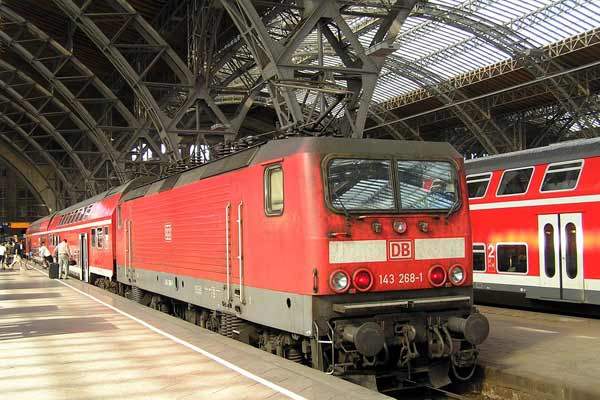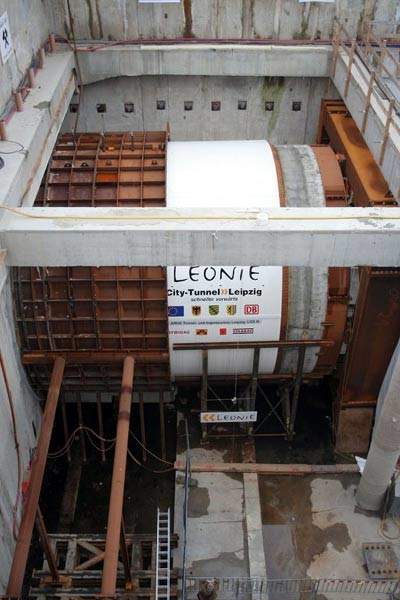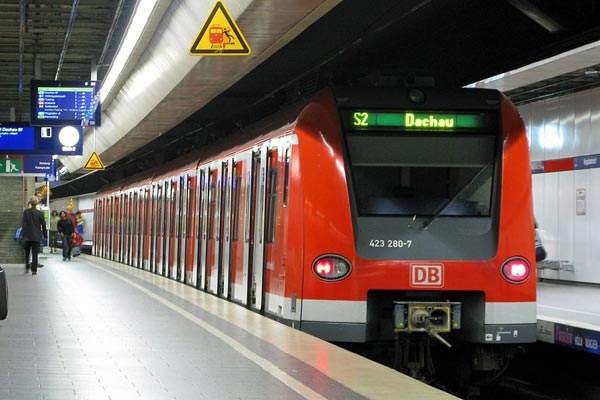A major engineering project in the industrial city of Leipzig is set to transform transport links in both the urban area and south-east Germany as a whole.
Following the lead taken by other German cities such as Munich, Stuttgart and Frankfurt am Main, the new city tunnel will end the inefficiency of reversals at a central terminus, improve connections, and provide interchanges with surface running buses and trams.
Rail tunnel project
Leipzig’s modern history has strong railway associations and the vast Hauptbahnhof (Hbf) completed in 1915 is one of Europe’s biggest termini. Another terminus, the Bayerischer Bahnhof on the south side dates from 1842. Plans to connect routes served by these stations and offset the present heavy skewing of public transport activity towards the north of the city have existed for many decades. The new connection will also bring rail services to the city centre, removing the need for transfer to bus and tram.
The area is subject to a range of improvements including the new Leipzig-Halle Airport line (opened in 2003) which is integral with the long-term Einheit / Unity project Number 8, the Berlin-Erfurt-Nürnberg-München high-speed line. Other track and signalling modernisation works are at aimed at increasing capacity and reducing journey times in the Leipzig area.
As with many urban-based rail projects, the city tunnel scheme aims to encourage public transport use with more intensive services and over a wider area, the projection being to save the equivalent of 320,000km by car each day. The project was launched in 1996, with construction starting in July 2003. A total of 1,500 jobs created were claimed for the project which was valued around €572m in 2003, with contributors including federal and state governments, DB and the European Community. In 2008, the cost was reported to have escalated to €750m.
Tunnel and track infrastructure
With crowns at between 8m and 16m from the surface, twin parallel bores were created with a single tunnel-boring machine (‘Leonie’) designed to cope with the tough local conditions. Helping to contain the effects of soil disposal, both bores were driven from the southern end near Bayerischer Bahnhof. Stations through central Leipzig, which has many historic buildings, were excavated from above and recovered to restore the ground space. With access tracks closed during the project work, the preserved frontage of Bayerischer Bahnhof is being incorporated as a surface feature in the new development.
Tunnels will feature ballast-free track throughout, fitted with a springing system to reduce noise levels. The 1,435mm gauge lines electrified at 15kV AC overhead supply will be integrated with the national network. New sub-surface stations will be at Leipzig Hbf, Markt, Wilhelm Leuschner Platz and the Bayerischer Bahnhof. An island platform layout is being used, with a standard 20m width and a platform length of 140m. The exception is at Leipzig Hbf at 215m platforms, with provision for
lengthening for long-distance trains serving south of Leipzig. The Semmelweisstrasse station on the southern approaches will use side platforms.
Rolling stock
Due for a completely new fleet, the rolling stock is yet to be determined, and like the Bremen S-Bahn project, may be a departure from the types that have so far dominated such operations in Germany.
Bremen opted for the Alstom Coradia Lirex Continental, also a prospective candidate amongst the seven multiple-unit types identified for Leipzig. With the use of single or double-decker stock undecided, other potential suppliers are Bombardier, Siemens, Stadler and locally-based FTD Dessau.
Signalling and communications
Safety installations appropriate for tunnel operation and signalling will be compatible with other DB Netz infrastructure. As per normal German practice, cross-mode ticketing will apply, with the area’s tariff union MDV also covering regional trains, buses and the trams of city operator LVB.
City tunnel future
City tunnel should open in 2011. Leipzig’s S-Bahn, which also incorporates the city of Halle 40km (25 miles) away will change radically as part of the process of service improvements. S-Bahn coverage will be enlarged, with operations intensified and completely recast. Services will concentrate along the new core through central Leipzig, diverging from Hbf (north) and Semmelweisstrasse (south).
Applications have been sought for an operator of six S-Bahn routes for 12 years from 2011, and the Dessau and Wittenberg areas are due to join the system in 2015 upon expiry of a DB Regio contract. Current plans indicate that long-distance services will continue to use Leipzig Hbf surface platforms.











